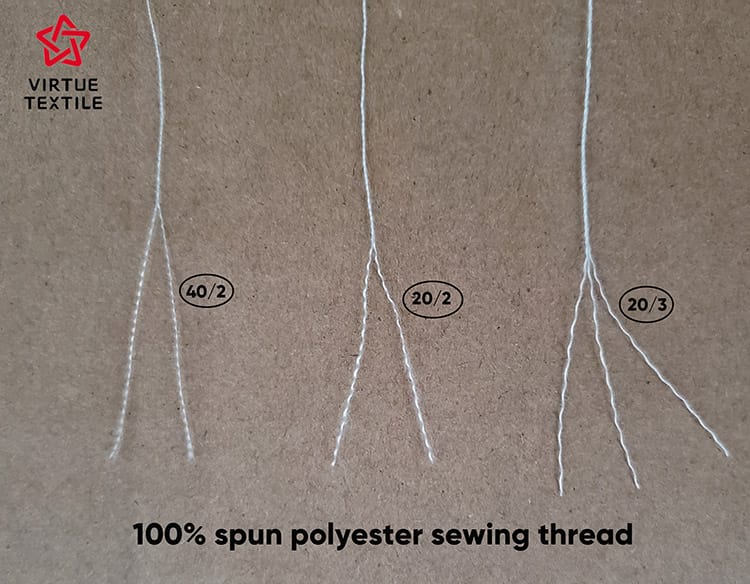The sewing thread models in the industry are divided into: 20/2, 20/3, 40/2, 40/3, 60/2, 60/3 and so on.
The thread is usually made of several strands of yarn twisted side by side. The 20, 40, 60, etc. in front of the sewing thread model refer to the yarn count. The yarn count can be simply understood as the thickness of the yarn. The higher the count, the yarn will be The thinner; the 2 and 3 behind the model respectively indicate that the sewing thread is made by twisting several strands of yarn.
For example: 60/3 is made by twisting 3 strands of 60 yarns. Therefore, the higher the count, the thinner the thread and the lower the strength of the sewing thread made of the same number of yarns. The more the number of strands, the thicker the thread and the higher the strength.
Thread thickness comparison: 20/3>20/2>40/3>40/2=60/3>60/2.The thread strength comparison is similar to the thread thickness! Generally speaking: 60/2 thread is mostly used for thin fabrics, such as summer silk, georgette, etc.; 60/3 and 40/2 threads are basically universal , also is the most common sewing thread, general fabrics can be used, such as cotton, linen, polyester, viscose and other common fabrics; 40/3 thread is used for thicker fabrics, such as woolen fabrics; 20/2 and 20/3 threads can be called a thread for denim, which are thicker and stronger. They are mostly used for sewing denim, bags, etc.
Learn about the previous article: How many different names are there for polyester?

